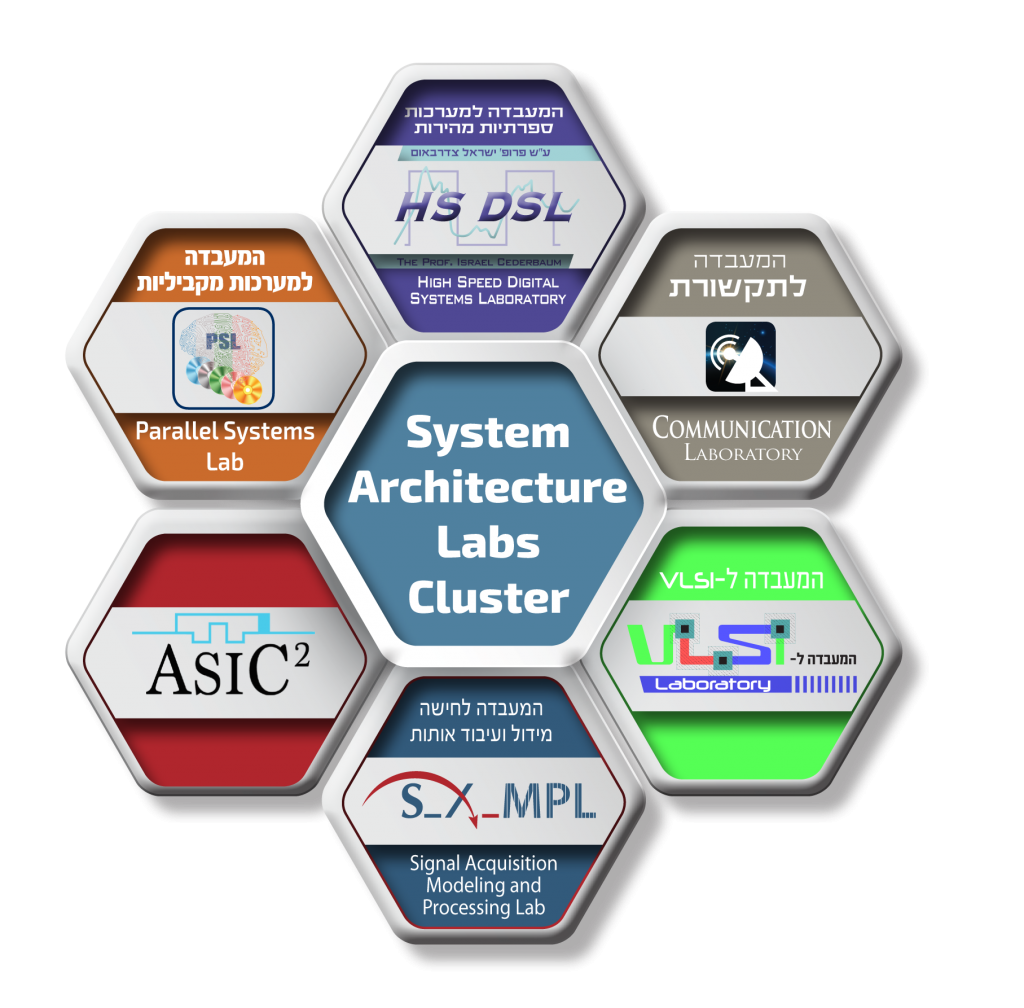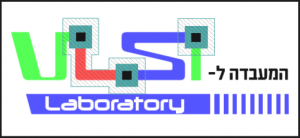
The System Architecture Labs Cluster
is a system oriented cluster of labs,
which while working together are able to provide a full working solution prototypes, from Memristors and flash ,
to chip design and system on Chip , through Printed Circute Boards and FPGAs
all the way up to a computer cluster, including analog digital conversions ,
compressed sampling , algorithm optimizations ,
Operation system manipulation , and communication solutions
The System Architecture Labs are :
—————————————————————————————————————————————————————

Research and education in computer systems, inclined towards parallel ones.
Fields of Interest :
Computer Systems, including communication and storage, with special emphasis on integrated design of the various system components to achieve optimum performance.
Experimentation with various parallel architectures and parallelization of important algorithms.
Beyond Von Neumann machines: dataflow; dynamic partial reconfiguration; hardware DLL (using FPGAs)
NVM performance enhancement (e.g., NAND Flash)
Incorporating new memory architectures
“Out of the box” thinking and solutions
—————————————————————————————————————————————————————

The Prof. Israel Cederbaum High Speed Digital Systems Laboratory (HS-DSL) has been established in 1964 as a research and teaching laboratory, to train students in up to date digital techniques. The High Speed Digital Systems Lab focuses on quality education and research at the cutting edge of digital system technology. Our graduates move on to assume important positions in the High-Tech industry. Using its breadth and ability to build systems that really work, the Lab reaches out to apply its core expertise in diverse domains such as Medical Sensing, Signal Processing, Internet of Things, High Speed Digital Communication, and Intelligent Computing. HSDSL has strong connections and collaborations with both industry and academia, in Israel and worldwide. This provides a vital channel to exchange ideas and technology, promoting future research and development. The Lab puts strong emphasis on projects and research that benefit society.
—————————————————————————————————————————————————————

—————————————————————————————————————————————————————
The VLSI lab staff is a highly motivated team of researchers, graduate students and engineers striving to conduct innovative and cutting edge research in diverse areas of VLSI and sensor design. The various research activities focus on modern VLSI processor architectures for big data systems, very high speed on chip interconnect channels, reconfigurable data flow architectures, memristor model development and circuit design, high frequency RFIC and mixed mode systems, novel thermal and 3D imaging sensors and also miniaturizing electron accelerators. By using the state of the art VLSI design tools and technologies we aim to provide the ideal environment for teaching and training the next generation of VLSI researchers and engineers and who will serve as leading contributors to academia and industry.
—————————————————————————————————————————————————————

he SAMPL Lab focuses on sampling, modeling and processing of continuous-time and discrete-time signals. Traditional systems treat the sampling and processing stages separately and require sampling at the well-known Nyquist rate. In contrast, SAMPL research focuses on new design paradigms in which sampling and processing are designed jointly in order to exploit signal properties already in the sampling stage. This approach has the potential to drastically reduce the sampling and processing rates well below the Nyquist rate, typically considered as the ultimate limit for analog to digital conversion. The proposed prototypes can reduce power consumption, hardware size and complexity, and enable efficient wideband sensing.
—————————————————————————————————————————————————————

In the Technion ASIC2 Research Group we investigate the implications of emerging technologies in Computer Architecture, VLSI Systems, and Integrated Circuit Design. In the context of this research, resistive switching devices such as Resistive RAM (RRAM), Spin-Transfer Torque Magnetoresistance RAM (STT-MRAM), Phase Change Memory (PCM), 3D Xpoint, and more, best known as memristors, are used for various applications, such as energy efficient architectures, memory design, logic circuits, analog and mixed signal circuits, hardware security, neuromorphic and cytomorphic computing.
ASIC2 is also very much involved in developing simulators, models and tools for computer-aided design.
—————————————————————————————————————————————————————


